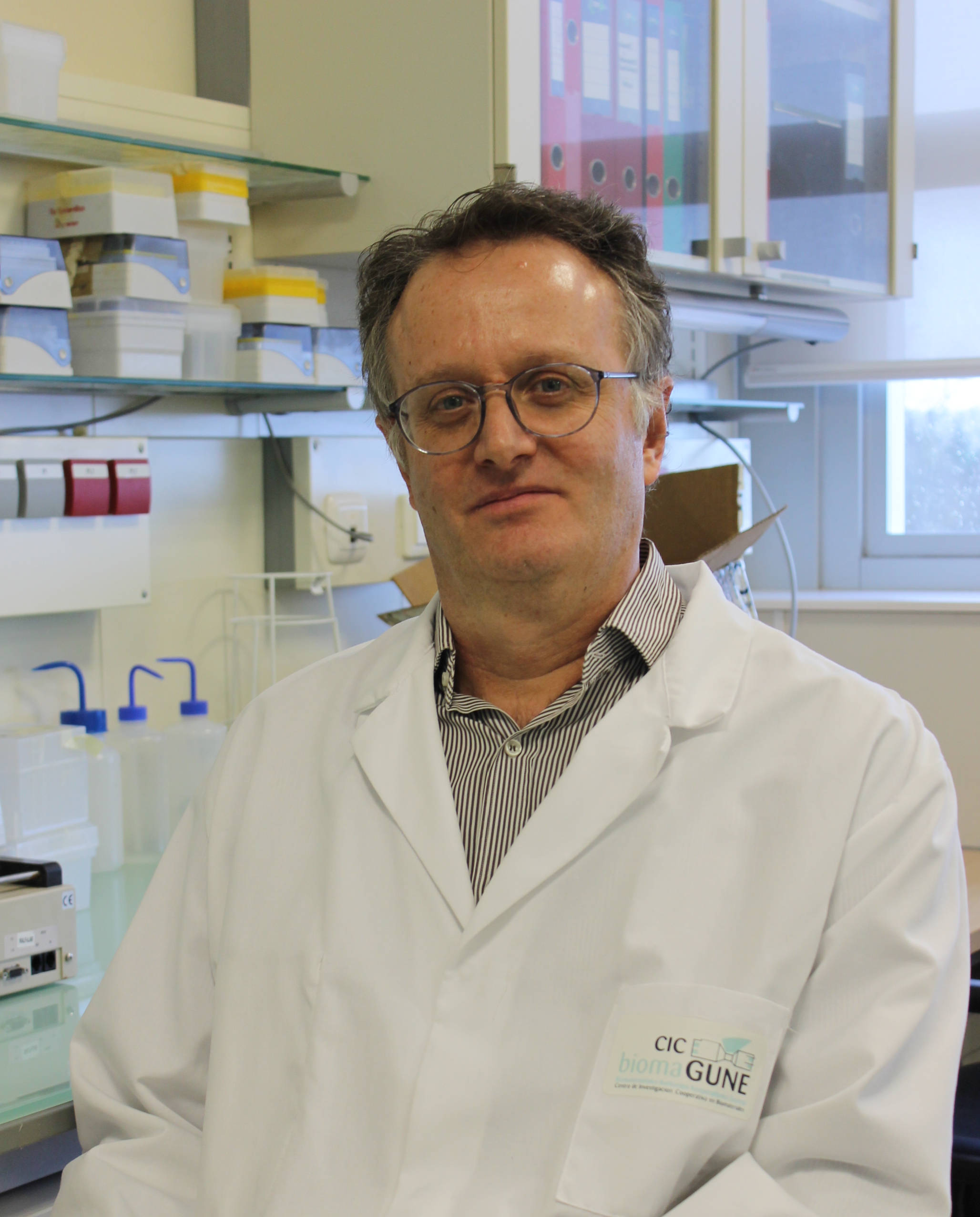Researchers at CIC biomaGUNE have participated in a study, published in the journal Nature, that shows that pirfenidone, a drug used to treat idiopathic pulmonary fibrosis and known to inhibit one of the mitogen-activated protein kinases (p38γ), blocks, amongst others, the phosphorylation of the protein retinoblastoma (Rb), and reduces the growth of diethylnitrosamine (DEN)-induced liver tumours in mice.
Jesús Ruiz-Cabello, Ikerbasque Professor, Head of the Molecular and Functional Biomarkers Laboratory at CIC biomaGUNE and a member of the Centre for Network Biomedical Research on Respiratory Disease (CIBERES), explains: "The Rb protein is well known in the tumour field as one of its functions is to inhibit or prevent cell proliferation, a common feature of tumour cells, and because it is altered in many types of cancer. It has been meaningfully demonstrated that, when treating tumours with this drug, the expression of Rb is lost, which supports the idea we already knew of its role in tumour suppressor activity".
Applications in the antitumour and antifibrotic field
This research, conducted over the last five years, will have applications in the anti-tumour and antifibrotic fields. It is commonly accepted that a comprehensive understanding of the molecular mechanisms which give rise to inadequate proliferation of cancer cells will lead to the identification of targets that can be therapeutically manipulated to stop or destroy these tumour cells. To this end, researchers are collectively making a considerable effort to understand the machinery that controls normal cell cycles, with a view to helping to identify altered molecules or processes in tumour cell cycles. In this incomplete molecular picture of cell cycle control, the activities of kinase enzymes that promote transit through different phases of the cell cycle are important, as they reflect possible therapeutic targets.
Animal tumour model produced by diethylnitrosamine
In this sense, using a DEN-induced animal tumour model, biochemical assays included in the article show that p38γ can phosphorylate the retinoblastoma protein Rb in vitro, and that p38γ is important for the phosphorylation of Rb in vivo. As the inactivation of Rb (controlled by phosphorylation) is important in certain tumours, and is known to be involved in many other regulatory functions, the importance of the results is clear. In the absence of expression of this Rb protein, cells may be insensitive to the need for mitogenic signals and, therefore, begin to divide (or proliferate), as is characteristic of tumour cells.
The team, comprising researchers from CIC biomaGUNE, the Spanish National Cardiovascular Research Centre, the Spanish National Cancer Research Centre, the Institute of Computational Chemistry and Catalysis (University of Girona), the University of Salamanca, the Complutense University of Madrid, the Spanish National Research Council, Oxford University (U.K.) and University Hospital RWTH Aachen (Germany), has shown that p38γ, a stress activated kinase, phosphorylates the protein retinoblastoma (Rb) in hepatocytes and other cell types.
Dr Ruiz-Cabello adds: “The strength of this article lies in the in vivo information linking p38γ with Rb phosphorylation, and the evidence that p38γ is important for transitioning from quiescence to hepatocyte proliferation. For this reason we believe it is a very important article for Rb research and tumour development itself”.
The research used tools related to cellular and molecular biology, proteomics, viral vectors, computational protein chemistry (molecular models) and longitudinal in vivo imaging using MRI.

